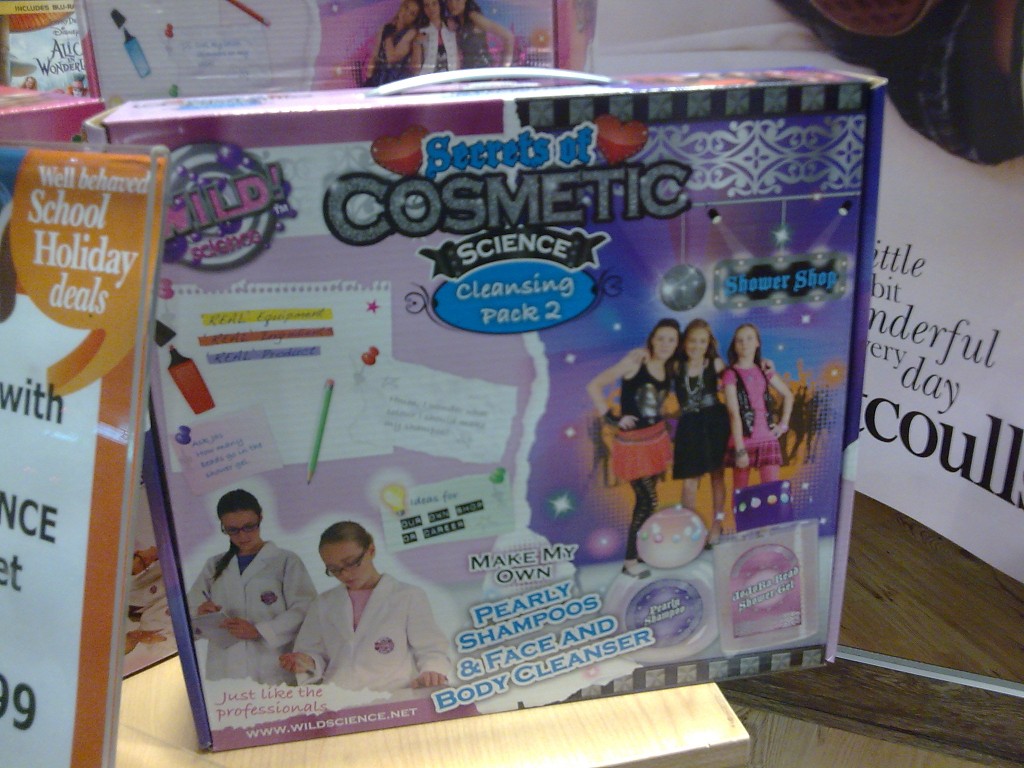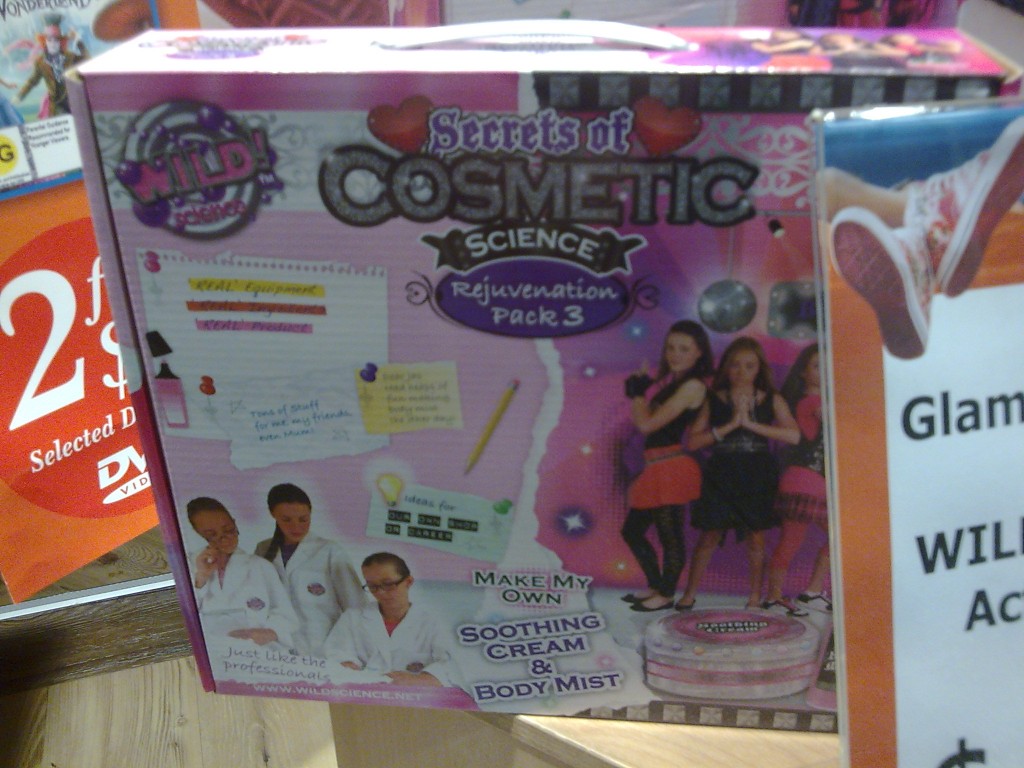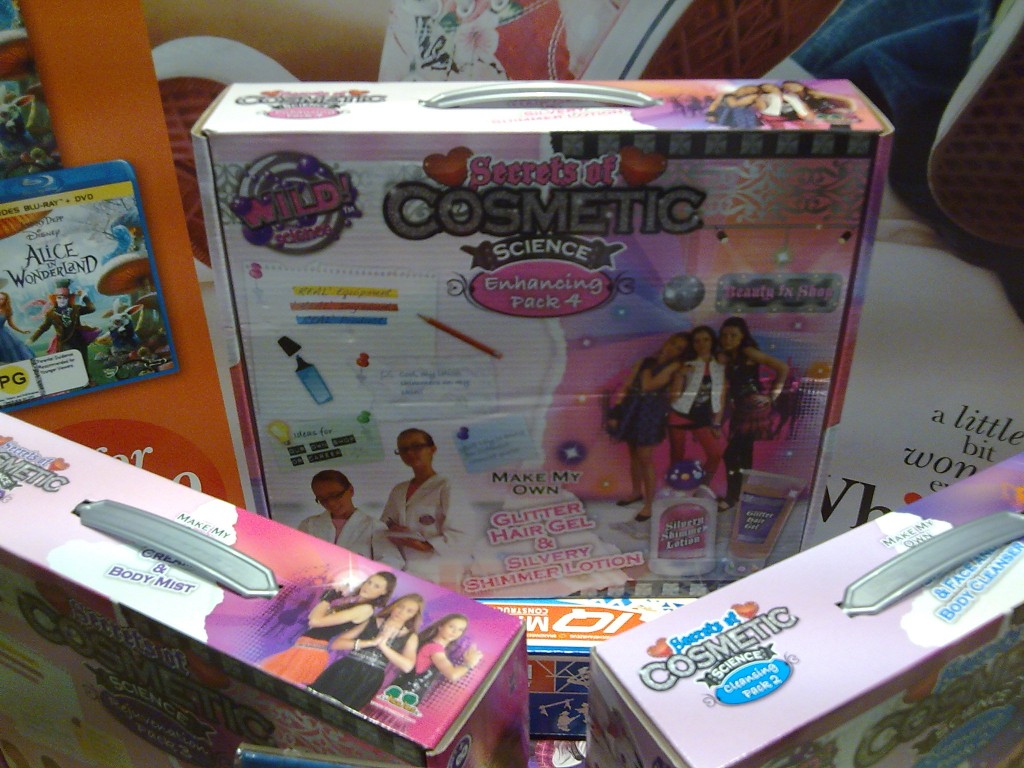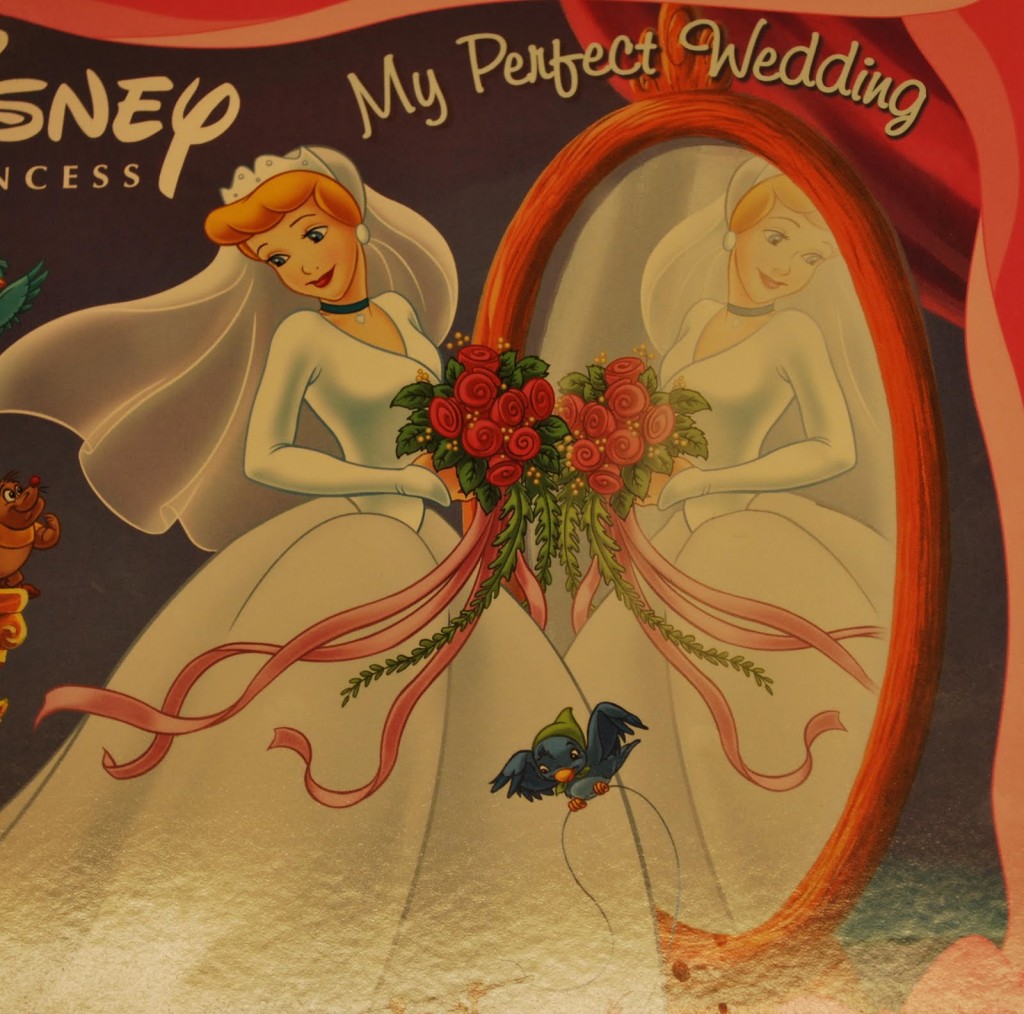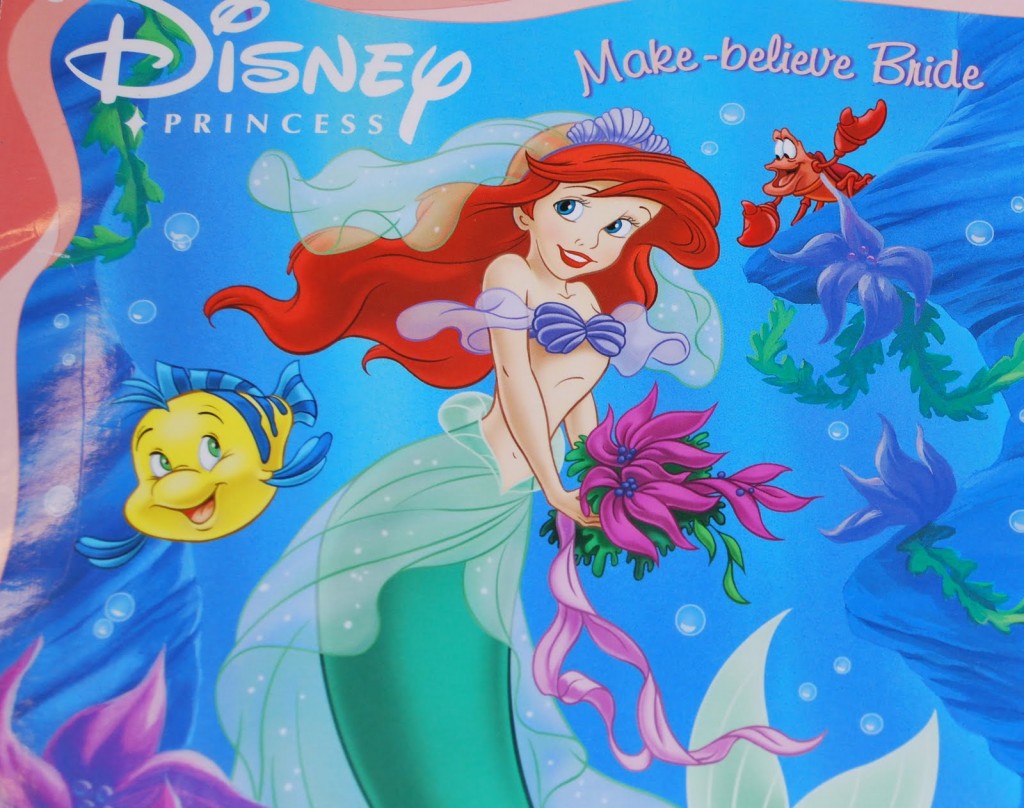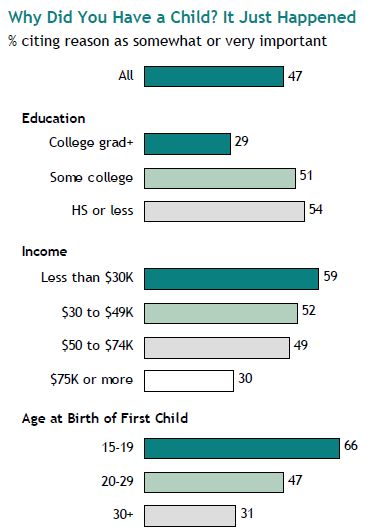Chen and Kristyn both sent in examples of gendered chemistry sets.
Chen found this example at Nemo, a science museum in Amsterdam. Notice that the kit with boys on it a boy in the foreground and a girl in the background is “Disgusting Science” and the kits with only girls on it are “Perfumery” and “Spa Science”:
Meanwhile Kristyn spotted these Cosmetic Science kits in Auckland, NZ. There were apparently at least four different kits aimed at making beauty products for girls.
Cleansing Pack 2, featuring Pearly Shampoos and Face and Body Cleanser:
Rejuvenation Pack 3, featuring Soothing Cream and Body Mist:
Enhancing Pack 4, featuring Glitter Hair Gel and Silvery Shimmer Lotion:
Lisa Wade, PhD is an Associate Professor at Tulane University. She is the author of American Hookup, a book about college sexual culture; a textbook about gender; and a forthcoming introductory text: Terrible Magnificent Sociology. You can follow her on Twitter and Instagram.


